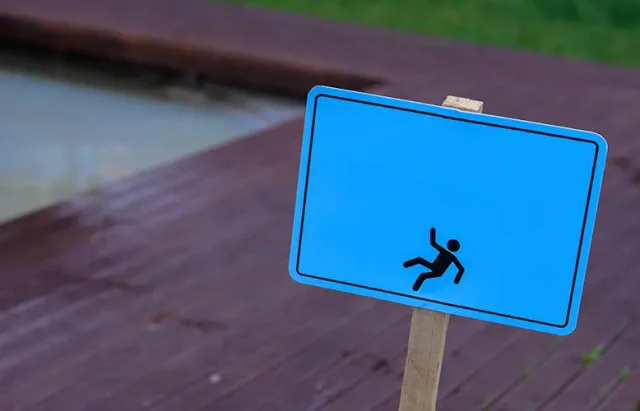
Slip-and-fall accidents rank among the most prevalent personal injury cases in the US. Annually, over a million Americans seek emergency room care due to injuries resulting from slips and falls.
According to the Centers for Disease Control, these incidents can cost around $30,000 to $40,000. What’s more, they can lead to severe long-term disability.
Given these consequences, it’s crucial to know how to secure fair compensation for the damages incurred during such accidents. This understanding can help you address the financial burden associated with these injuries promptly.
In this blog, we’ll explore how you can prove negligence in slip-and-fall accidents. We’ll also discuss the different key pieces of evidence you need to strengthen your claim.
Join us as we dive deep into negligence and personal injury claims.
Elements of Negligence
There are five elements to establishing negligence in personal injury cases:
Duty of Care
Negligence is only possible if there is a duty of care is owed. Duty of care is an individual’s legal responsibility to adhere to a standard of care to avoid causing harm or injury to others.
For example, property owners must properly maintain their estates for the safety of their guests and visitors. This means addressing potential hazards like wet floors, uneven concrete, etc., that could cause them to slip and fall.
This duty extends to both public and private property owners.
Breach of Duty
Once you’ve established that the other party owes you a duty of care, you have to demonstrate that there was a breach of duty.
Breach of duty happens when a person fails to meet the standard of care expected of them in a given situation.
Causation
To prove negligence, you have to establish causation. This means proving that your injuries are the direct result of the other party’s careless action or lack thereof.
If you slipped and fell in a grocery store because the floor was wet and there were no warning signs, you have to prove that the management’s lack of warning signs led to your fall and subsequent injuries.
The key to establishing causation is connecting the incident and your injuries to the other party’s negligence.
Foreseeability
Foreseeability refers to whether the defendant could have predicted the consequences of their actions. You have to prove that the other party was aware of the harm their decisions would cause to establish negligence.
Going back to our earlier example, if the grocery manager knew that leaving a wet floor unattended could cause someone to slip and fall, they would be held liable for any damages it causes.
However, if the defendant couldn’t have anticipated the adverse effect of their decisions, they can’t be held legally responsible for them.
Damages
Lastly, you must prove that the defendant’s negligent actions led to significant damages, entitling you to fair compensation. If you slipped and fell in a store, but you didn’t sustain any injuries, you won’t be able to pursue a claim against them.
Comparative Negligence in Slip-and-Fall Accidents
Comparative negligence is a legal concept where both parties involved in a personal injury case can be liable for the damages based on their respective degrees of fault. They’re categorized into two main types: pure comparative and modified comparative negligence.
Under pure comparative negligence, a plaintiff can still be compensated for their injuries even if they were 99% at fault. This rule applies in 12 states, including California.
Here’s an example: Let’s say you filed a $100,000 claim against the grocery store, but you were found responsible for 30% of the accident. In that case, you can only get 70% of your claim, which is 70,000.
Meanwhile, in modified comparative negligence, plaintiffs are prohibited from recovering damages if their assigned fault reaches a certain percentage. The limit for modified comparative negligence varies from one state to another. For instance, Colorado’s is 50%, while Illinois’ is 51%.
If you’re filing a personal injury claim for slip-and-fall, you must understand how your jurisdiction’s comparative negligence laws work. This way, you’ll be able to anticipate the potential outcome of your case.
Key Evidence For Slip-and-Fall Cases
To strengthen your personal injury claim for a slip-and-fall accident, you must provide compelling evidence of your injuries and the other party’s negligence.
Here are some of the key evidence that you’ll need to support your claims:
- Medical records.
- Medical bills.
- Accident/incident reports.
- Security camera footage of the incident.
- Photographs of the accident scene.
- Witness statements.
How to File A Claim For Slip-and-Fall Accidents
If you were in a slip-and-fall accident, here’s what you need to do to file your claim:
Get Immediate Medical Treatment
The first thing you need to do after an accident is to get immediate medical treatment. Even if you feel fine, you need to be properly examined by a medical professional.
Certain injuries don’t manifest themselves for days; some even for weeks. But by getting immediate medical attention, you’ll be able to catch them early on.
File An Accident Report
Once you get the help you need, you must file an accident report with the property’s manager. This report will serve as your official documentation of the incident, which will be useful when filing a claim.
We also suggest you exchange insurance information with them. Get the manager’s name, contact numbers, and their insurance provider. This way, you’ll be able to know who to contact later on.
Hire A Lawyer
Lastly, we recommend hiring a lawyer before you file your claim. A personal injury attorney helps injured victims like get justice and fair compensation. They’ll help you fully understand your options and guide you in filing a claim for your injuries.
Moreover, a lawyer will negotiate with the defendant on your behalf. They’ll work hard to give you a settlement that reflects the extent of your injuries. They have the necessary experience to negotiate with insurance adjusters looking for a way to reduce their payout.
With an experienced attorney by your side, you can focus on your recovery and healing.
File A Slip-and-Fall Claim Today
If you need help creating a personal injury claim for slip-and-fall accidents, look no further than Adamson Ahdoot.
Adamson Ahdoot is one of California’s leading litigation firms. To learn more about how they can help, visit their website here or call them on





